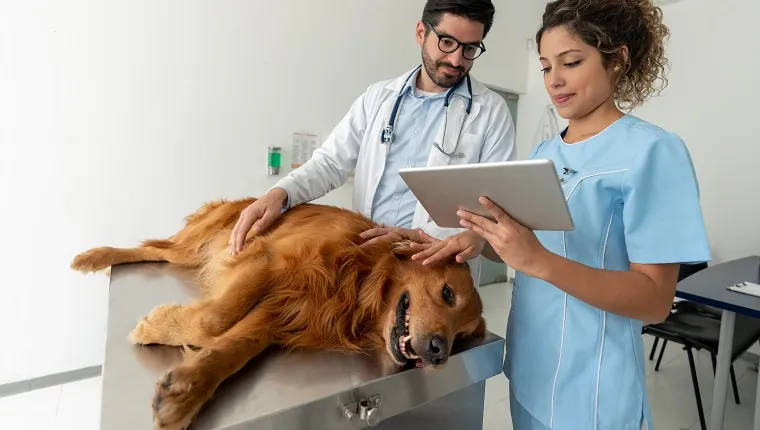Dead tail in dogs, also referred to as swimmer’s tail, cold tail, or broken tail, is a medical condition that causes a dog’s tail to go limp. It’s often caused by a sprain and subsequent inflammation of the tail muscles.
The condition, also called acute caudal myopathy, can produce symptoms of varying severity. It seems to affect certain breeds, including Labrador Retrievers, Beagles, and Foxhounds, more than other dogs.
If you see signs that your dog might be developing issues with their tail, then you must consult your veterinarian for a proper diagnosis and advice. Here’s what you should know about the symptoms, causes, and treatments of dead tail in dogs.
Symptoms Of Dead Tail In Dogs
Dead tail in dogs can bring on a number of symptoms that usually affect the tail and the tail area. Some of the most frequently seen symptoms include:
- Flaccid tail
- Discomfort if the tail is touched
- Not being able to sit down comfortably
- Hair raised around the tail
- Acting lethargic
- Licking and chewing at the tail
Causes Of Dead Tail In Dogs

The precise cause of dead tail in dogs is not known; although, there are a number of factors and circumstances that seem to bring about the condition.
Some of the most common potential causes include:
- Straining or spraining the tail muscles, usually after overexerting them
- Swimming
- Exposure to very cold and very wet weather
- Being in a cage too long while being transported
Additionally, the following breeds of dog seem to be most predisposed to developing the condition:
- Labrador Retrievers
- Golden Retrievers
- Beagles
- Foxhounds
- Pointers
In general, younger dogs and working dogs also seem to be affected by this issue more than older, more leisurely canines.
Veterinary Treatments
If you suspect that your dog might be suffering from dead tail, your veterinarian will want to carry out a full physical examination of your dog along with asking about their recent activity levels.
In many cases, the condition comes about when dogs overexert themselves without proper conditioning to sustain a high level of exercise.
When it comes to treatment, allowing your canine to rest up is usually the most effective measure. The condition often heals on its own; although, it has been estimated that up to 16 percent of dogs who suffer from it experience some form of permanent damage to their tail.
The use of anti-inflammatory medicine can help in the early days of treatment. As always, if your vet prescribes your dog any medicine, it is important that you stick to the correct dosage and frequency instructions and complete the full course of medicine.
While your dog recovers, it is advisable that you monitor your their exercise regimen and take steps to allow them to build up to a greater rate of activity at a slow and steady pace.
Has your dog developed dead tail? What advice did your vet recommend to help your canine heal? Tell us all about it in the comments below.









